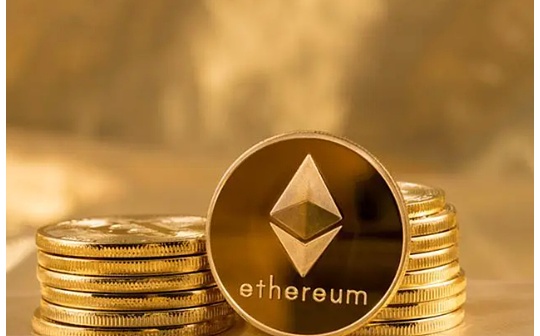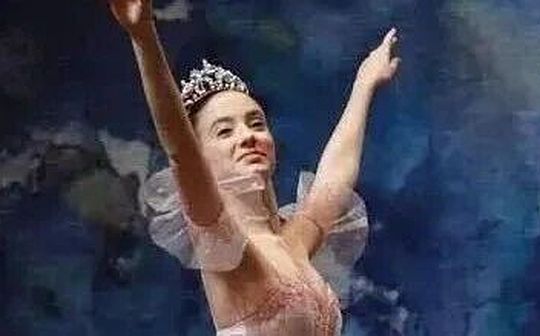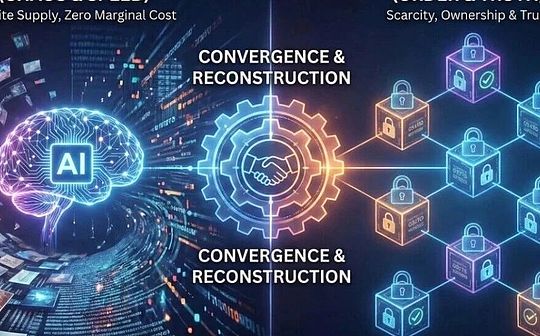
Written article: Carl Cervone, Kevin Owocki
Source: Chainfeeds
Compilation: innocence
Editor: Open source project analysis product Open Source Observer team member Carl Cervone and Gitcoin co -founder Kevin Owocki jointly wrote the financing cycle of Ethereum ecological public goods, as well as problems and opportunities existing in each cycle.This article provides a basic framework for the periodic studies of public items, and the opportunities mentioned in them have a large reference value as a construction direction.
TLDR
-
This article discusses the end -to -end financing life cycle of the Ethereum public items;
-
We believe that solving these problems can create sustainable competitive advantages for the cryptocurrency ecosystem;
-
We outline the life cycle of public goods financing:
-
The cradle phase focuses on the construction and obtaining initial funds;
-
The maturity stage includes community construction and survival in the “sad trough”;
-
The unicorn stage is about achieving significant impacts and obtaining traceability funds.
-
If the project is on the right road, don’t let the project die because of lack of funds;
-
If the builder is on the wrong path, the road of death / reflection / revival should be accelerated;
-
If the project dies, the team should continue to move forward, which should not be a shame.In particular, we should encourage the teachings of these teams, so that the future teams will not make the same mistake.
-
If the next generation of builders become unicorn, how can we attract them to make a highly honest commitment to give back to public products?
-
How do we carry out a social movement to make it a trend?
-
How can we bring together these commitments and make trusted commitments for future funding?
-
Increase Hypercerts/EAS into the existing public goods funding project
-
Establish a new influence certificate service to help people distinguish between which are influential projects
-
Establish a new forward -looking public product financing tool to obtain future traceability rewards.
-
If a builder failed to attract funds / proof, is it because there is a problem with the ecosystem, or because the founder has not found an important area to be worthy of funding?
-
What kind of security nets do public goods builders special?Reverse thinking: How to establish these security nets can it be used?
-
There must be some services that all teams need, such as law, background, recruitment, audit, office time, etc.Will these services become the key to the independent team of small teams?
-
Which of these services are most valuable to builders in the cradle?What is the Tam of each new service during the cradle phase?If Tam is large enough, we will see that companies serving these niche markets are constantly emerging.If TAM is large enough, how can we gather DAO and let them concentrate resources to provide these services?How can we attract builders to provide these services?
-
Although funding is a good start, once developers and ecosystems cooperate well, they need to take a second step to this relationship, that is, developers feel comfortable and the long -term relationship between “guests”.Only when we have the agreement on the agreement and can establish a long -term relationship in the ecosystem, the development of the developers can do the best.It is not good to refer to where to hit.How do developers change from phased financing to regular financing?
>
Life cycle of private items financing project
There is a famous chart showing the life cycle of a startup: from the first report by TechCrunch, to the gradual loss of freshness, to the long -term “sad trough”, and finally span the gap and sell it for billions of dollars.
>
Such startups are usually provided by venture capital companies.Most of them died in the trough because they exhausted their funds before finding the product and the market.
The financing infrastructure of startups is quite complete: they will get some initial funds for venture capital to build products around their ideas; if they enter the growth stage, they will get more venture capital (and income); in the end, if, if, if, in the end, if, in the end, if, in the end, if, in the end, if, in the end, if, in the end, if, in the end, if, if they are in the end, if they are in the end, if, in the end, if, if they are in the end, if they are in the end, if, in the end, if, if they are, in the end, if they, in the end, if they, in the end, if they, in the end, if they are in the end, if they are in the end, if they are in the end, if they are in the end, if, in the end, if they are in the end, if, in the end, if they are in the end, if they are in the end, if they are in the end, if they eventually, if they are in the end, if they eventually, if they are in the end, if they are in the end, if they are in the end, if in the endEverything goes well. When the company has a liquidity incident, everyone will get a huge return from the funds they invest.
In addition, there is a value chain composed of different investors, which provide funds for different types of startups of different types and stages.Early investors are often very different from later investors.Most of the early investors were bet on people, so they needed professional field knowledge and network to find good transactions.In the later period, investors pay more attention to numbers, so they will pay close attention to the company’s indicators and macro conditions.Investors in this area can provide valuable resources, including education, recruitment, guidance, etc.
Public item financing project life cycle
Let’s consider what a similar capital life cycle diagram of the Ethereum public item ecosystem may look like. In the ideal circumstances, it provides funds for it before, during and after the team has influence.
>
In order to accelerate innovation, every feasible project should be funded in the “cradle to unicorn” stage of the life cycle of public items.
In addition, funds, verification and other resources are required to help the project spend the “sad trough” from initial construction to becoming unicorn.Not all projects can be successful.In fact, most projects are not.If the project dies and the team continues to move forward, we should not feel shame because of this (we should particularly encourage the experience and lessons of these teams to make public, so as not to repeat the same mistakes in the future).
1. Cradle: potential financing stage
>
In the starting stage (early to the middle to the middle), funds are required to reduce the early cost of entrepreneurship.People are afraid of resigning, and it is difficult and time -consuming to apply for many school aid programs.
However, the provision of funds cannot be reviewed.In order to truly help the builders, the builders need to verify which things can create value for how many people.While obtaining funds, you need to verify whether your work is important.
Bounty and hackers are a good way to sow the creativity, but they are unpredictable and stimulate the team to continuously convert project / jump ecosystems.From winning several small hackers to obtain a large -scale funding, there should be a better way. Perhaps there are a few fast appropriations in the middle.This will help more projects start and provide a more easy resignation for the testing builders to work in the way of the work full -time.This also helps builders focus on specific ecosystems, rather than jumping from one funding to another appropriation.
In the cradle phase, the project should focus on the most important thing: construction.They should build as much as possible in public.Any things that can simplify their lives + to focus on construction / study, whether it is looking for insurance or hiring an excellent smart contract auditor, it is worth it.Ideally, they should not spend too much time to worry about the source of the next funds.
In our schematic diagram, this stage starts from winning the hacker marathon to the end of the small funding of the Ethereum Foundation.They have not had any real impact, but they have proved that they are worthy of a large amount of potential funds to build something.
2. Mature: community financing stage
>
There are some funds in this project, but it is very unsatisfactory.It is building and trying different things, but often no one really cares.
“Sad Tritting Valley” is like the bear market of the project.This is even more difficult when your “sad trough” and the capital bear market appear at the same time.
In order to spend the “sad trough” and grow into a mature public item project, you need to build a community and start to have a real impact on these people.This is the most valuable stage of community funding mechanisms such as secondary financing and direct gifts.
Although most projects cannot raise $ 100,000 in this way, they should be able to obtain sufficient funds to maintain survival and continue to develop.These mechanisms forced the project to keep close connections with the community and increase the awareness of the community.
The best project in Gitcoin Grant is those projects that already exist and build reputation, not those projects that announce their existence to the world through Gitcoin.We have observed other funding platforms including CLR.Fund and Giveth.
The best projects are mature at this stage, and they enjoy a good reputation due to useful public items in the community.
3. Unicorn: Tracing financing stage
>
At some point, the project will have an inflection point, and the impact on the ecosystem will far exceed the fair compensation obtained.We hope that this is where a lot of traceability funds play a role.
Ideally, we will start to see various complementary mechanisms with funds for these projects.ETH’s pledge income or ETF profit (such as VAN ECK) will be awarded a reputable project.Increase the Optimism Retropgf round, they are allocated by a group of badge holders.
At present, these are mostly technical mechanisms, but over time, public product projects are expected to bring more down -to -top recurring income.Tea.xyz and Drips V2 provide different fund combination methods.This idea can be extended to any form of public items.The better we do the cultural aspects of the tracing and the culture of rewarding upstream, the more likely to become a feasible recurring source of income for public welfare projects.
Finally, if you can set up a prize equivalent to the X Award or a large -scale pre -market commitment (AMC) for public items, it will be an exciting thing.
4. Death (sometimes) is a characteristic, not a mistake
>
Many projects cannot achieve sustainable development and cannot become unicorn, but died during the development process.In some cases, this is a characteristic, not an error.
When a project fails, it can provide valuable lessons for entrepreneurs, investors and a wider community.One of the main lessons is the importance of market demand: many projects fail because the products or services they create cannot meet strong demand.This highlights the necessity of comprehensive market research and continuous customer feedback.A failed project can also highlight the importance of timing.Even the most creative ideas need to be proposed when market demand begins.
Another key experience is the importance of flexibility and adaptability.The project is often operated in a rapidly changing environment. Whether it can make adjustments based on market changes, customer feedback or technological progress is essential to survival of the project.Failure also taught the importance of our team’s motivation and leadership.One of the common reasons for the failure of the project is internal conflicts or lack of clear leadership and vision.Therefore, the establishment of a strong, cohesive team that is consistent with the goal of the startup is as important as the creativity itself.
As the builder of the ecosystem, the most important thing is:
5. Not every successful project is unicorn
>
Perhaps “unicorn or death” is a wrong frame.Many projects do not want to be a unicorn.In fact, the worship of unicorns is a problem with the risk investment model. In this model, the whole process depends on whether it can find a 100 -fold chance of exit, so that all your funds can be rewarded.
It is necessary to have a lifestyle and business model for the public that items -there is a chance to build some tools with small size but can provide huge value, but these tools can never achieve index -level growth -that is, changing the world or becoming a unicorn.
Suggestion and openness
1. Keep making big cakes
One of the similarities that we can get from venture capital / startups is that successful founders can become the next generation of investors.
We can see that contemporary unicorn companies provide funds for the next generation of public product projects during the cradle stage.This has happened, and projects like 1Inch and Uniswap have changed from Gitcoin Grant to donors to match pool donors and doniders of Protocol Guild.This should be encouraged at the social level.
We can provide funds for the next generation of projects by creating a credible crypto commitment, thereby enhancing the motivation of society.If each new project that obtains funds in the cradle phase has released an EAS proof, indicating that they plans to use 5% token for the next generation of projects, then this will create a quantitative future for the next generation of public product fundspromise.
opportunity:
2.Retropgf provides the opportunity to “affect = profit”
VC promotes startups to accelerate and get as much as possible.The thrust of public products should be as much as possible for the ecosystem.
Tracing public goods financing provides an opportunity to promote a different value capture mechanism, which integrates this mechanism with the “influence = profit” model.
By introducing the financing of traceable public goods into an ecosystem, we can create a reliable monetary return commitment for the maximum public product.Because traceability is easier to judge project quality than expected, traceability financing is closer to “impact = profit”.
But in this way, future public welfare -funders can change the early steps of funding the life cycle.Make speculators speculating which public welfare is most likely to get traceability in the future.The tool that allows users to make “angel investment” in the early cycle of “angel investment” may promote the development of this area.
Another opportunity is to create an influence proof that the most impact of which items are tracked in a credible way.These large -scale influence proves that it will form a trust network that allows all projects to prove each other’s influence.Tools like EAS and Hypercerts can provide the foundation for these influence proofs.When whale funders use these tools as signal detection to determine what projects are funded, they become more and more valuable, and they can also be used as builders to understand whether they are on the right path.
opportunity:
3. Survey in the cradle stage
Creating a reliable approach to spend the cradle stage is the most important unreasonable problem in this field.
The open problem here includes:
4. Are we just reshaping venture capital?
In some ways, the financing life cycle of this ecosystem may begin to be similar to the reshaping of venture capital.
In venture capital, funds usually accumulate a number of outstanding developers and other service providers, which can provide any help they need to be found in the founders.
We should carry forward the successful experience here, but we must also pay attention to the opportunity to reshape these ecosystem services from the first principle.
The combined financing model provides builders with opportunities to have a variety of different funds and service sources (rather than a venture capital company).
Tracing public goods financing provides builders with opportunities to pay attention to public products, not just those things that can extract value.Value is obtained by the network and feeds it to the network.
The super -module of the web3 system is also an opportunity.Because the smart contract is competitive, the more people use, the greater the value, so the opportunity to provide motivation for the index growth curve in the early days, so as to get a return in the future.
Solving this problem is META
Does the public product financing of “from cradle to unicorn” create a new Meta (the most effective strategy) for the encrypted ecosystem?
We believe that with the maturity of cryptocurrencies and the increasingly important fundamentals, providing funds for public products for ecosystems will become a sustainable competitive advantage, just like work, schools, medical care and entertainment as the city’s competitive advantage.Essence
The pro -social behavior has evolved independently in the economy / natural ecosystems around the world dozens of times (the wolf group predisies together, and the human beings jointly form a company or country, etc.).In our opinion, it obviously evolves into an encrypted economic system.
In a sense, the theme of “Ethereum” has occurred.Projects that adopt Ethereum thinking and business models can enjoy many special rights in a mutually supporting network (whether it is out of altruism or rational economic benefits, I hope to see the success of the two).
With the development of the ecosystem, the opportunity has the opportunity to expand this mentality to a large number of DAOs existing in the Ethereum ecosystem.Each project competes in the value chain to increase value, which will guide the pro -social environment in its community.
>
In this article, we have studied how to do this in the entire life cycle of public product projects -from cradle to unicorn, or from cradle to death.







